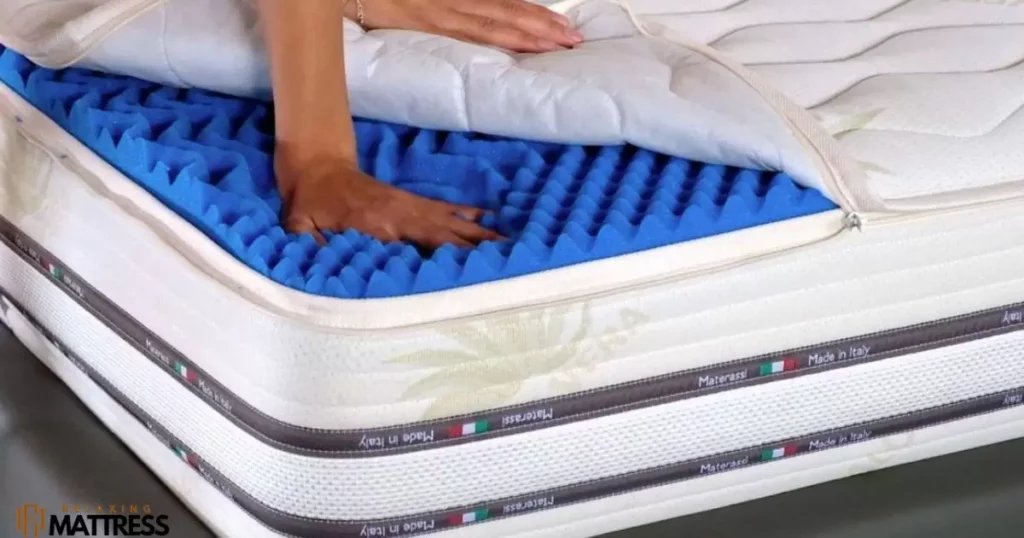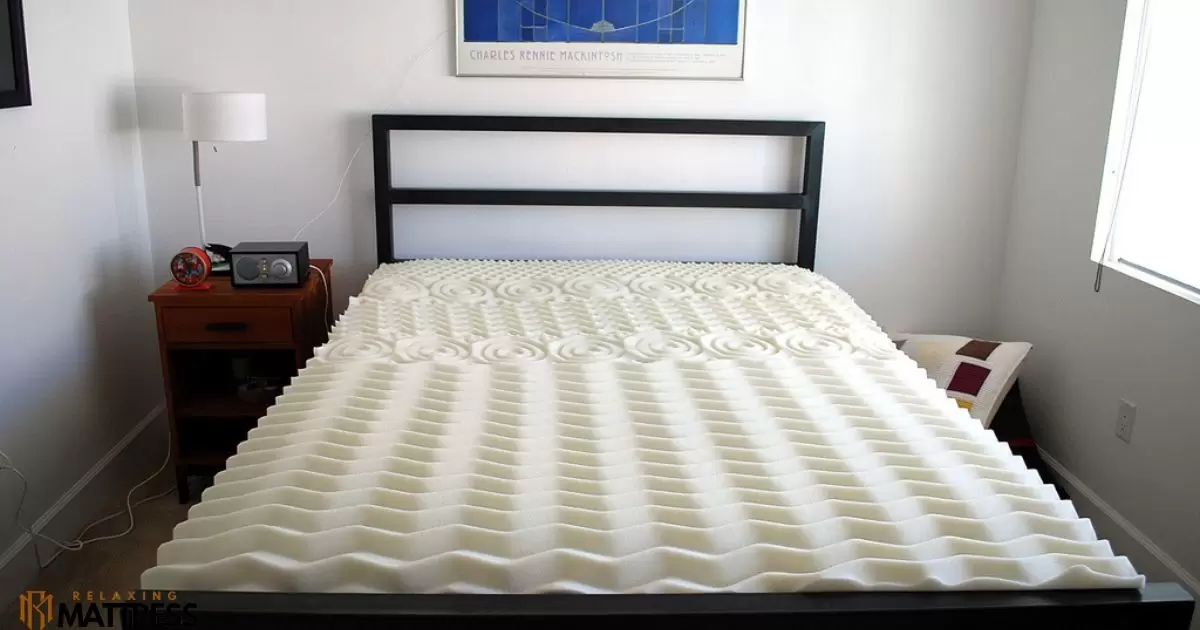Memory Foam Mattresses, a popular bedding choice, are crafted from viscoelastic foam designed to contour to the body’s shape. This material provides a supportive and comfortable sleep surface, responding to body heat and pressure.
Are Memory Foam Mattresses Dangerous? This question lingers in the minds of those exploring bedding options. As consumers seek the perfect balance between comfort and safety, concerns about potential hazards associated with memory foam mattresses come to the forefront.
Thinking about Memory Foam Mattresses being dangerous involves considering various factors. While these mattresses are widely celebrated for their comfort, there are debates and discussions surrounding potential health risks.
Investigating the Safety of Memory Foam Mattresses
Some concerns include potential off-gassing of chemicals and allergic reactions. Investigating the safety of memory foam mattresses involves understanding these factors and making an informed decision for a comfortable and secure night’s sleep.
When looking into the safety of memory foam mattresses, consider factors like CertiPUR-US certification, ensuring the foam meets specific health and environmental standards. It’s essential to be aware of any odors when you first unbox a new mattress, as this could be a sign of off-gassing.
Are Memory Foam Mattresses Truly Dangerous?
Memory foam mattresses, widely known for their comfort, come under scrutiny when it comes to safety. Some people question, “Are Memory Foam Mattresses Truly Dangerous?” The concern often revolves around potential off-gassing, as these mattresses can release certain chemicals that may cause discomfort or allergic reactions.
It’s essential to explore these safety aspects to make an informed decision about your bedding choice. It’s crucial to note that not all memory foam mattresses pose the same level of risk. Many reputable manufacturers prioritize using CertiPUR-US certified foams, ensuring they meet specific health and environmental standards.
Before dismissing memory foam altogether, it’s wise to research and choose products that prioritize safety, helping you sleep soundly without compromising your well-being.
The Potential Risks of Memory Foam Mattresses Exposed
Many people love the cozy comfort of memory foam mattresses, but did you know there might be potential risks hiding in your bed? Some folks worry about off-gassing, which is when the mattress releases chemical odors. These odors could cause discomfort or even health concerns for sensitive individuals.
Some memory foam mattresses contain chemicals that might trigger allergies in certain people. It’s essential to be aware of these potential risks, so you can make an informed decision about whether the comfort of memory foam is worth the possible downsides. Always prioritize your health and well-being when choosing the right mattress for a good night’s sleep.
Understanding the Safety Concerns Surrounding Memory Foam Mattresses
When considering the purchase of a memory foam mattress, it’s crucial to be aware of potential safety concerns associated with this popular bedding choice. The table below outlines key safety factors, shedding light on aspects like off-gassing, chemical composition, and possible allergic reactions.
| Safety Factor | Description |
| Off-Gassing | The release of chemical odors from the mattress, which may cause discomfort or health concerns for some users. |
| Chemical Composition | Awareness of the materials used in memory foam mattresses, as certain chemicals may pose risks to sensitive individuals. |
| Allergic Reactions | Understanding the potential for allergies triggered by specific components present in some memory foam mattresses. |
A Critical Examination of Memory Foam Mattress Dangers
In exploring the safety of memory foam mattresses, it’s crucial to take a closer look at potential dangers associated with these popular bedding choices. Some individuals express concerns about off-gassing, where the mattress releases certain chemicals into the air, leading to possible respiratory issues.
While memory foam mattresses, especially those lasting a 12-inch, are celebrated for their comfort, understanding the risks involved is essential. Allergic reactions to certain components, such as flame retardants or adhesives, have been reported. A critical examination sheds light on these potential dangers, enabling consumers to make informed decisions about their bedding choices, balancing the desire for a cozy night’s sleep with the need for a safe and healthy sleep environment
Assessing the Safety of Memory Foam Mattresses

When evaluating the safety of memory foam mattresses, it’s crucial to consider potential health concerns. Some people worry about the chemicals used in memory foam and their impact on respiratory health.
While these mattresses are generally safe, it’s advisable to choose reputable brands and properly ventilate the room to minimize any potential risks. The safety of memory foam mattresses extends beyond chemical considerations. Issues like overheating due to the material’s heat retention properties can affect comfort.
It’s essential to strike a balance between the desire for a plush sleep surface and ensuring optimal conditions for a restful night. Regularly checking for wear and tear and following proper care guidelines can contribute to a safer and more comfortable experience with memory foam mattresses.
Potential Health Risks Linked to Memory Foam Mattresses
Memory foam mattresses, while lauded for their comfort, may pose potential health risks that deserve attention. One concern is the off-gassing of volatile organic compounds (VOCs) released by some memory foam mattresses, which can lead to respiratory irritation. These mattresses may contain flame retardants and other chemicals that some individuals may be sensitive to, raising questions about long-term exposure and its impact on health.
Allergic reactions are a consideration for those with sensitivities. Dust mites and allergens can accumulate in the dense structure of memory foam, potentially triggering allergies. It’s crucial for consumers to be aware of these potential health risks and make informed decisions when choosing bedding options, taking into account individual sensitivities and preferences for a healthy night’s sleep.
Weighing the Safety Factors of Memory Foam Mattresses
- Off-Gassing Concerns: Some memory foam mattresses release volatile organic compounds (VOCs), which can lead to respiratory irritation.
- Chemical Components: Flame retardants and other chemicals present in memory foam may raise questions about long-term health effects with prolonged exposure.
- Allergic Reactions: The dense structure of memory foam can accumulate dust mites and allergens, potentially triggering allergies.
- Individual Sensitivities: Consumers need to be aware of these health risks and consider personal sensitivities when making decisions about mattress choices.
- Informed Decision-Making: It’s crucial to weigh these safety factors to ensure a healthy night’s sleep on a memory foam mattress.
Examining the Safety of Memory Foam Mattresses
Delving into the safety of memory foam mattresses is crucial for a good night’s rest. While these mattresses are popular for comfort, some concerns exist. People often question potential risks like off-gassing and allergic reactions, prompting a closer look at the safety aspects before choosing one for your bedroom.
Examining the safety of memory foam mattresses involves considering factors such as the materials used and their impact on health. Some users report a temporary odor known as off-gassing, attributed to the release of volatile organic compounds.
FAQ’s
What are the potential health risks associated with memory foam mattresses?
Memory foam mattresses may pose concerns related to off-gassing, chemical components, and the possibility of allergic reactions for some individuals.
Can memory foam mattresses impact indoor air quality?
Yes, off-gassing from memory foam mattresses can release volatile organic compounds (VOCs) into the indoor air, affecting its quality.
Are there alternatives to memory foam mattresses with fewer potential risks?
Yes, individuals concerned about potential dangers may explore alternative mattress materials, such as natural latex or organic cotton.
How can I minimize potential risks if I choose a memory foam mattress?
Allowing the mattress to air out in a well-ventilated space before use and using a mattress cover can help reduce potential risks associated with memory foam.
Conclusion
In the quest for a good night’s sleep, understanding potential risks associated with memory foam mattresses is crucial. While these mattresses offer comfort and support, concerns about safety linger in the minds of consumers. The debate surrounding the question, “Are Memory Foam Mattresses Dangerous? highlights the importance of informed decision-making when it comes to selecting bedding.
As individuals weigh the benefits and potential drawbacks, they navigate a landscape of comfort and caution in pursuit of restful nights on a mattress that aligns with their health and well-being. Navigating the world of mattresses involves more than just comfort considerations. The lingering question about the safety of memory foam mattresses prompts individuals to delve into discussions about off-gassing, chemical components, and potential health implications.









